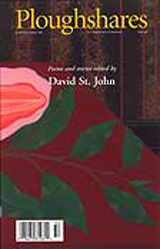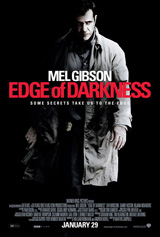Welcome to Monday Morning Grammar, a new regular feature on Mots Justes that will kick off the workweek with a (hopefully) helpful grammar tip.
Our first installment will tackle one of the smallest yet still challenging parts of speech, the article—i.e., a, an, and the. The use of these three tiny words comes second-hand to native English speakers, but non-native English speakers, who often don’t have equivalents in their own languages, can really struggle with their application.
What’s the Article About, Anyway?
An article (a, an, or the) is a type of adjective. It signals a noun is about to appear. Specifically, an article is a limiting adjective that indicates something definite (in which case, use the) or indefinite (a or an). It can appear right before a noun, or additional modifiers may appear between the article and the noun:
Tim hit a homerun.
Eric hit a record-breaking homerun.
A definite article (the) refers to something, well, definite—a specific object when any old thing just won’t do:
Where is the controller for the Xbox?
An indefinite article (a or an) refers to nonspecific things that aren’t necessarily any different from anything else of its kind:
I’m hungry for a cookie.
A/An Versus The
Before we discuss when to use a/an versus the, let’s first talk about count and noncount nouns. Count nouns are simply nouns that can be counted: one apple, two balls, three trees, etc. Noncount nouns, on the other hand, cannot be counted: water, air, integrity, clothing, etc. (For more examples of noncount nouns, click here.)
If you’re dealing with a singular count noun—bicycle, let’s say—that is not specific, use a/an. A noun is not specific if it is the first time it is being mentioned and so the reader is unfamiliar with that particular object, or perhaps even the writer him-/herself doesn’t know its identity:
Timmy wants a bicycle for his birthday.
If a singular count noun is specific and would be clear to the reader, use the.
Timmy’s mother bought the red bicycle that he pointed out in the sports shop window for his birthday.
Never use a/an for plural count nouns. Only use the:
Eric’s mother asked him to help her put away the groceries.
Also, never use a/an for noncount nouns. Again, only use the:
Tim and Eric moved the furniture around.
Here’s a handy chart to help you remember when to use a/an versus the:
articles singular count nouns plural count nouns noncount nouns
indefinite (a/an) yes no no
definite (the) yes yes yes
There are a couple of exceptions, however. Don’t use the—or any article, for that matter—when a plural or noncount noun is referring to all of the object or the object in general.
Pianos are difficult to move. (Don’t use the in front of “pianos.”)
Corn is abundant in the Midwest. (Don’t use the in front of “corn.”)
And don’t use an article in front of proper nouns, although there are exceptions to this exception—for example, the United States.
A Versus An
You may have learned (or think you learned) that a precedes words that start with consonants and an precedes words that start with vowels, and this often works:
Tim caught a ball.
Eric bit into an apple.
But actually, it’s the sound that a word starts with that determines whether to use a or an. Letters such as h, o, and u complicate the a-versus-an decision by sometimes sounding like consonants and sometimes sounding like vowels:
Tim rode a horse.
Eric will be here in an hour.
Tim ate an orange.
Eric turned the wrong way down a one-way street.
Tim disagreed with an umpire.
Eric dreamt about a unicorn.
The rule becomes even more confusing when the pronunciation of the word in question varies by country or region. For example, it drives me crazy when the word historic is preceded by an:
The 2008 election is an historic one.
It turns out, however, that historic is pronounced istoric by some people on the East Coast and so preceded by an. I say historic, however, and so will continue to use a.
The a-versus-an pronunciation rule also applies to abbreviations and acronyms. Today’s topic actually occurred to me last week, when I was writing about the do’s and don’ts of literary journal submissions. I included a discussion about SASEs, and I wasn’t sure whether to precede it with a or an.
I decided to use a because I was pronouncing the abbreviation in my head just the way it looks: sase. However, if I had been saying to myself, s-a-s-e, I would have used an because the letter s starts with an e sound.
Consider the use of a versus an with the following abbreviations and acronyms:
Tim wants to be an FBI agent when he grows up.
Eric wants to be a CIA agent when he grows up.
Neither boy wants to be an OPEC representative when he grows up.
Similarly, the is actually pronounced differently depending on the sound that starts the word it precedes. If a word starts with a vowel sound, say thee:
Eric bit into thee apple.
If a word starts with a consonant sound, say thuh:
Tim caught thuh ball.
However, you can also use thee for emphasis:
Guitar Hero is thee hot game of the season.
Look at that: a, an, and the—six little letters—have generated nearly nine hundred words on their proper use. Yet, I’m sure there’s more. If I’ve left anything out, let me know. Or if you have any additional questions, ask away!
Resources
Chicago Manual of Style, The. 15th ed. Chicago: The University of Chicago Press, 2003.
Fogarty, Mignon, Grammar Girl’s Quick and Dirty Tips for Better Writing. New York: Holt Paperbacks, 2008.
Hacker, Diana, The Bedford Handbook for Writers, 3rd ed. Boston: St. Martin’s Press: 1991.







